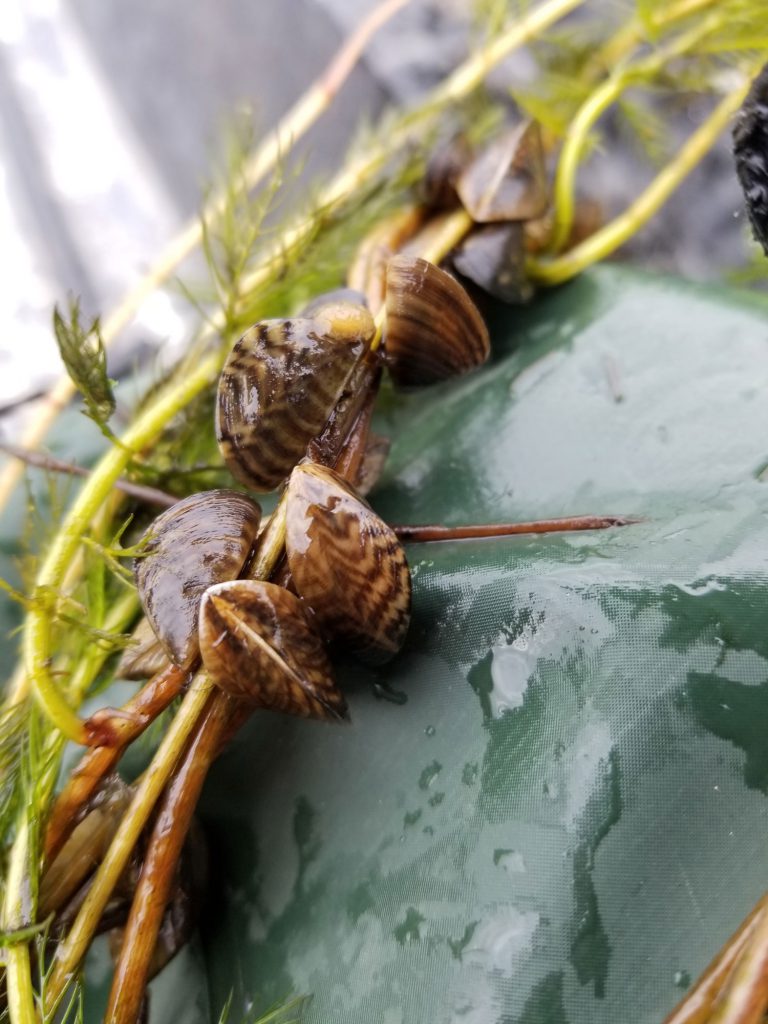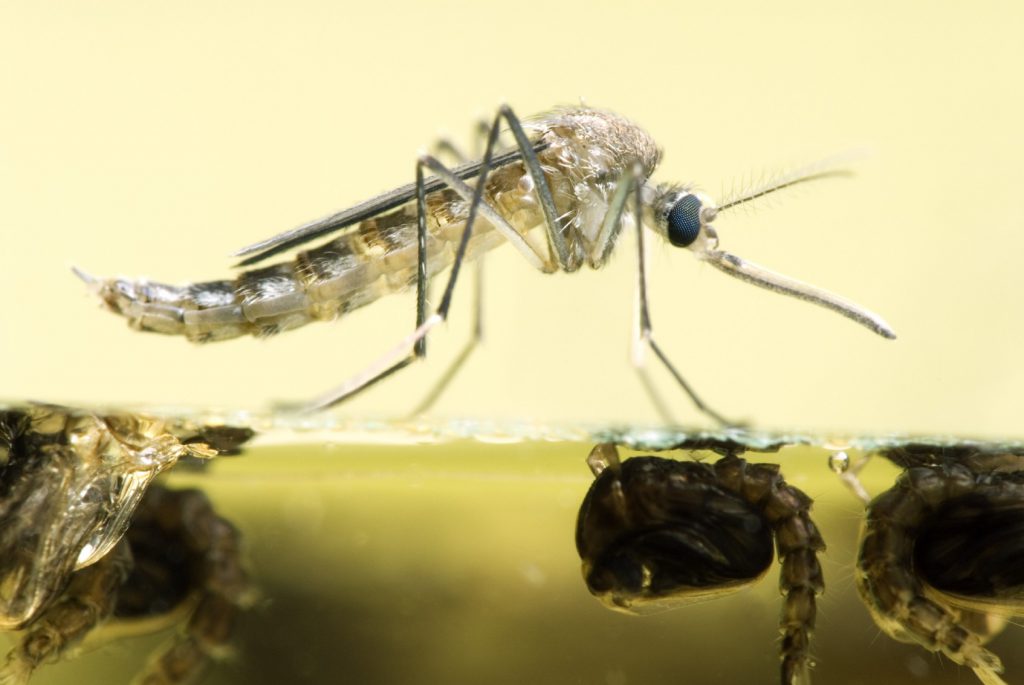
Identifying and Managing Nuisance and Invasive Wildlife
Nuisance and invasive species are not inherently bad, but they can negatively impact our waterways. Let’s take a look at some common invaders that may be lurking in your backyard:
Island Apple Snails (Pomacea maculata) - Native to South America
Apple snails can be hard to identify as they closely resemble their native counterparts. However, their vastly different eating habits can take a toll on the environment. Unlike native species that feed on mostly algae and detritus, this invader voraciously feasts on the rooted aquatic plants that serve as beneficial littoral buffers around our watersheds.
Containment screens near water inflows and outflows can help prevent further spread. Containment screens should be installed carefully to ensure the structure is functioning properly and not at risk for flooding. Physical removal may also be conducted by hand or with specialized mechanical equipment. In extreme cases, a molluscicide may be applied by a licensed professional.
Armored Catfish (Pterygoplichthys sp.) - Native to Central and South America
Armored catfish, also known as suckermouth catfish, are popular aquarium animals. They can be distinguished from native catfish species by their bony plating and the location of their mouth. In the wild, however, they are known for burrowing into the sides of ponds and canals to mate and lay eggs. This causes erosion, muck development, and dangerous shoreline destabilization over time.
Management of armored catfish can be difficult. Strategic electrofishing, trapping, and physical removal are effective but may require consistent and sometimes multi-year efforts.
Zebra Mussels (Dreissena polymorpha) and Quagga Mussels (Dreissena rostriformis bugensis) - Native to Eastern Europe
Zebra and Quagga mussel populations, first discovered around 1990, are now found in at least 28 states. These tiny invaders adversely affect phytoplankton and zooplankton populations, interrupt fish spawning, clog water supply pipes, and kill native mussels. They spread to other waterbodies by attaching themselves to boat motors and trailers.
Be sure to inspect all water equipment before leaving a site to ensure these species are not hitching a ride. In severely threatened waters, licensed professionals may need to apply an EPA-registered molluscicide to establish full control.
Mosquitoes (Culicidae family) and Midge Flies (Chironomidae family) - Native Nuisances
Mosquitoes and midges both reproduce in standing water, but differ in many ways. Mosquitoes bite, causing itchy bumps and the transmission of deadly diseases. Midges of the family Chironomidae do not bite but are known to roam in large swarms that coat cars, pools, and outdoor lights, trigger allergies, and emanate the smell of rotting fish when they die off.
Plant native buffers to attract predator dragonflies, stock fish to feast on eggs and larvae, and introduce aeration systems to circulate stagnant waterbodies. When needed, EPA-registered larvicides and adulticides can be applied by ground crews, drones, and even aerial fleets to target the nuisances at all stages of their lifecycle.
When exotic species are identified early on, it’s much easier to intervene. For help determining if one of these invaders has taken up residence on your property, contact your lake management professional who can help you design a customized management plan that protects your aquatic ecosystem.
Who We Are
SOLitude Lake Management is a nationwide environmental firm committed to providing sustainable solutions that improve water quality, enhance beauty, preserve natural resources and reduce our environmental footprint. SOLitude’s team of aquatic resource management professionals specializes in the development and execution of customized lake, pond, wetland, and fisheries management programs that include water quality testing and restoration, nutrient remediation, algae, and aquatic weed control, installation and maintenance of fountains and aeration systems, bathymetry, shoreline erosion restoration, mechanical harvesting and hydro-raking, lake vegetation studies, biological assessments, habitat evaluations, and invasive species management. Services and educational resources are available to clients nationwide, including homeowners associations, multi-family and apartment communities, golf courses, commercial developments, ranches, private landowners, reservoirs, recreational and public lakes, municipalities, drinking water authorities, parks, and state and federal agencies. SOLitude Lake Management is a proud member of the Rentokil Steritech family of companies in North America.













